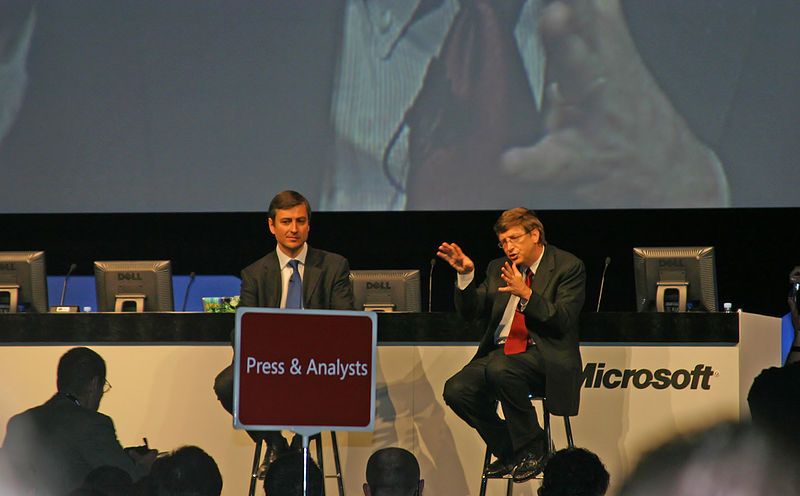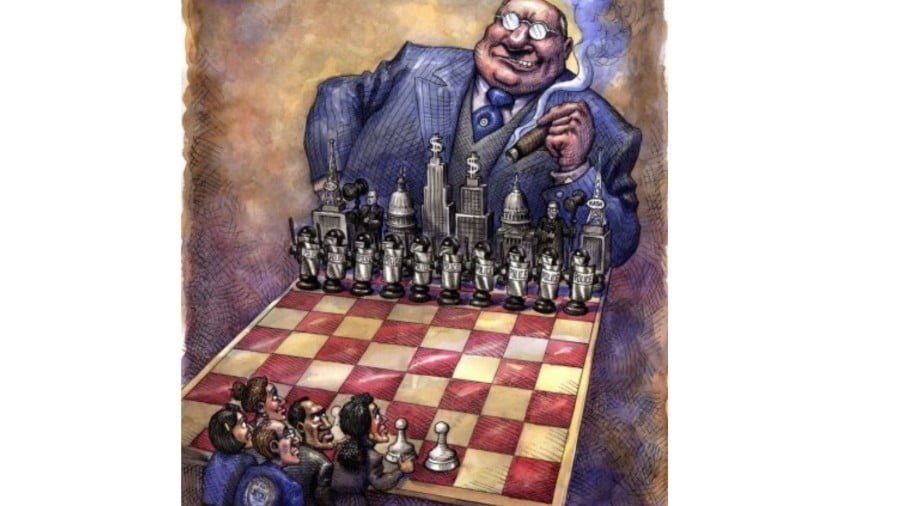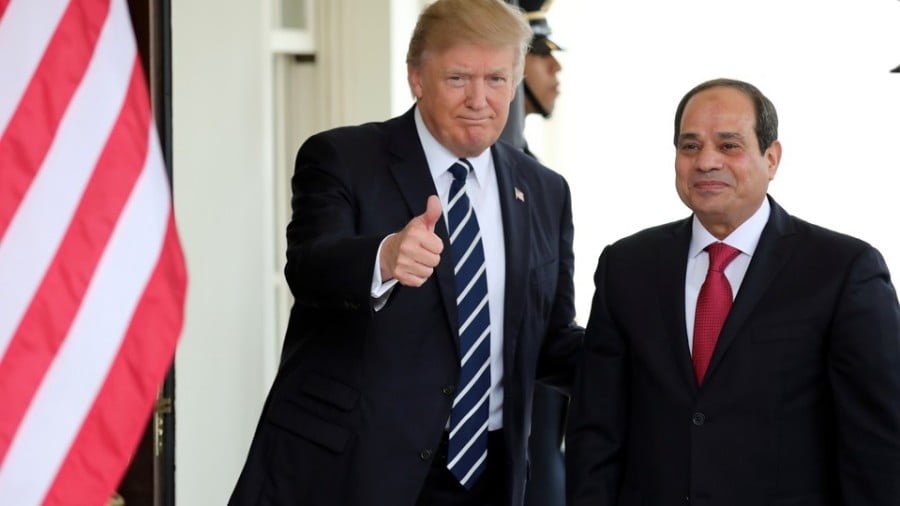The Corporate Dictatorship of the Very Rich
I heard friends praising Bill Gates philanthropy a while ago; it still surprises me how people respond to billionaires. The wealthy improve their image financing self-serving projects they present as “serving others” but few question their motives or suspect them of hidden agendas. Most take billionaires at face value and forget how they made their fortunes.
Gates is a monopolist who crushed others in the process of building Microsoft. At least, J.D. Rockefeller (the first) made it a bit easier for us, he was blatant enough to call competition a “sin” and built Standard Oil monopoly trying to protect its privileges even from government antitrust legislation, “dissolving” the company while keeping it secretly alive through a hidden network managed by the exactly same nine men who managed it before. Rockefeller was devious but not unique among Robber Barons. Neither is Gates; one in a group with Jeff Bezos, Mark Zuckerberg and other monopoly billionaires with their private foundations.
The impact of the Rockefellers funding organizations and projects, in the US and abroad, was immense; the world, their oyster; and their goal, “full spectrum dominance.” Not surprisingly, the Rockefellers worked at extending their power, profits and the use of oil and found, in controlling food through biotechnology, a path to their goals. The very idea of “agribusiness” is theirs; and, conveniently, agribusiness brings together mechanized agriculture (increased oil use), petrochemicals (synthetic herbicides, insecticides, fertilizers) and rent (patents for seeds & animals). The Rockefeller saga for total control is described as a novel by F. William Engdahl in Seeds of Destruction, a must read. The Rockefellers financed the Green Revolution, biotechnology, agribusiness, eugenics (in the US and Germany), had the ear of at least four US presidents, and hand-picked Henry Kissinger -their protégé, to manage their foundation and use food as a weapon -rewarding friends, hurting enemies; first used in Chile against Allende’s government. Bill Gates admires the Rockefellers and joined them in funding the Green Revolution; he now says he wants to “save” Africa with GMOs and we should at least wonder. (1)
New State, Old Hierarchy – a bit of history is good for the soul
Although much of the actual fighting for independence in the colonies that would become the US was done by poor people, enforced hierarchy (in Army and nation) was such as to made everyone know his place and keep it and penalties for breaching, 30-40 lashes. Suppressed conflicts between rich and poor kept re-emerging in a time of huge profits for the rich and hardships for all others. Inflation and speculation led to riots: growing needs made it difficult to accept the privileges and safety of the wealthy. A new class of men had not emerged: the men engineering this war were part of the colonial ruling class and quite concerned with keeping relations of wealth and power. People were together because of the rhetoric, the fight, the camaraderie of military service and some land distribution. The makers of the Constitution worried about popular rebellion against wealth and favored a particular order. James Madison praises it as preventing “a rage for paper money, for an abolition of debts, for an equal division of property or for any other improper or wicked project.” Men decided, women were left out. No efforts were made towards equality -between slaves and masters, property holders and people without property, Indian Nations and whites. The Constitution improved after the Bill of Rights, it seemed to turn government into “protector” of people’s liberties. The language was new so it was unclear to most that everyone’s liberty would be in the hands of a government of the rich and powerful. (2)
Independence caused the exodus of 100,000 loyalists, a hole on top of wartime costs and destruction. Some received government contracts during the war, a few were portrayed as financing the war effort, but in truth the war financed them. Still, for most the war was about hardships. Crisis, like the one of 1837, filled the Hudson Valley with unemployed people seeking land. By the summer of 1839 land tenants resolved “to take up the ball of the Revolution and roll it to the final consummation of freedom and independence of the masses.” Petitions for Anti-Rent resolutions signed by 25,000 tenants were put before the legislature (1845) but the bill was defeated. Voting did not change the system either as government enlarged the number of small landowners but left the basic structure of rich and poor intact. After the Civil War (1865) ordinary people lived in cities full of diseases, hunger, fire, thousands of women working in houses of prostitution. Garbage two feet deep (full of rats) filled the streets. And, while the rich had access to drinking water from a clean river everybody else drank from the Delaware into which 13 million gallons of sewage were dumped daily. The Civil War was lethal, it included artillery shells and bayonet charges, a combination of mechanized war with hand-to hand combat that killed 623,000 and left 471,000 wounded. Still, in the middle of the battles, Lincoln took time to sign into law a number of Acts giving business what they wanted. After the war, workers organized for the eight-hours in St Louis; the Workingmen’s party denounced capital and serfdom calling for the nationalization of railroads, mines and all industry. Black men joined in the fight against Monopoly, but after the railroad strikes were defeated (1877) blacks realized they will not have the promised equality. Working people knew they were defeated by the joining of private capital and government power; the rich managed political life. (2)
Wealth & Inequality – growing and growing
In the American colonies of the 1690s wealth evolved from covert expeditions by merchants (to plunder gold, silks, ivory); by 1763 the richest merchant families owed 40% of their wealth to war, privateering and earlier piracy. After independence (1805-40) shipping, banking and ties to government were key, while real estate (plantations-in the South, commercial-in the North, shipping and merchandise-outshore) became crucial later (1840-60). Later yet, the civil war pushed shipping, merchandise and real estate to the side bringing forth railroads, iron, coal, oil, and finances. Fortunes became larger: from $10-20 million (1840s) to $200-300 million (1890s). Wealth grew connected to government from the beginning. Alexander Hamilton, in favor of a wealthy elite proposed the early republic to create the Bank of the United States & a project to redeem -at full face value, US debts & certificates and debt instruments of the various states. These bonds, paid to speculators (Morris, Duer, Bingham) who bought them at 1/10th of face value, made them rich. This scheme ended but later on, Jefferson, critical of Hamilton but in favour of a political & wealth elite of rich men of his own (Dem-Republican) worked it with Astor and Hampton I. The new state believed in wealth and loved wealthy men. (3)
Rug to riches is a myth, while few multimillionaires started in poverty most came from middle or upper-class families. Most fortune building was not illicit either, but legally done with much help from courts and government. At times this collaboration was paid, like when Edison promised politicians $1,000 each in return for supportive legislation or when Drew and Gould spent $1 million to bribe the New York legislature to legalize overprized stock on the Erie Railroad. J.P. Morgan, son of a banker and builder of the House of Morgan, started selling stock for the railroads for high commissions before the war. During the civil war he bought and sold defective rifles at a profit making a bundle, he cared little that his failing rifles will shoot off the thumbs of the soldiers using them. Morgan escaped military service by paying $300 to a substitute fighting on his behalf, so did JD Rockefeller, Andrew Carnegie, Jay Gould, James Mellon. Instead of challenging the rich, government helped them – as when it decided to issue bonds for a value of $260 million and rather than selling them directly gave them to Drexel, Morgan & Company in a contract paying the bankers a $5 million commission. (2)
Inequality grew with the growth of American fortunes. The size of the largest of them jumped from $1 million to $100 billion between 1790 and 2000. The ratio of largest fortune to median grew too, from 4,000:1 to 50,000:1 (1790-1848) and kept increasing until 1982 (60.000:1) and again during the 1990s. The highest ratio of fortune to media was in 1912 -with JD Rockefeller’s fortune (1,250.000:1) then again in 1999 -with Bill Gates’ fortune (1,416.000:1). The high ratio of 1910-40s reflects the Gilded Age -a time of great inequality. The high ratio at the end of the 20th century marks a new Gilded Age of even greater inequality. (3)
By the end of the 20th Century, Miringoff (in Phillips) argued that inequality measurements put English-speaking nations with their greater emphasis on markets and individualism, at the lead among Western nations in term of poverty among people over 65 (US, Australia and Britain are top three), child poverty (US, Britain, Australia, Canada and Ireland are top five) and overall inequality (US, Ireland, Australia, Britain and Canada among the top eight). (3)

Concerned about the size of monopolies, Senator John Sherman wrote the Sherman Anti-Trust Act which passed in 1890 (protecting trade & commerce against unlawful restraints, making it illegal to form a combination or conspiracy to restrain trade in interstate or foreign commerce). The Court, however, interpreted Sherman Act (1895) so as to make it harmless and used it against interstate strikes. Years later the Court refused to break up the Standard Oil and American Tobacco monopolies interpreting the Act as barring only “unreasonable” combinations or conspiracies -not the usual ones. The justices of the Supreme Court were not just interpreters of the Law but men with particular interests and backgrounds. (2)
As today, some preached then about the honesty of rich men to the detriment of poor people. Russell Conwell, graduate of Yale Law School and founder of Temple University, was one of those arguing that rich American men were honest while the poor deserved poverty. Philanthropy played a role in making the rich likeable though, improved their image and increased their power. Givers shaped society through money while avoiding taxes; many institutions, such as universities, were funded by them. The first Rockefeller donated to colleges all over the US; Carnegie gave money to colleges and libraries; Cornelius Vanderbilt, Ezra Cornell, James Duke and Leland Stanford created universities in their own names. Giving worked for the rich, made them popular while weakening government and subordinated it to them. It was a win-win tactic then and now: philanthropic giving is a strategic form of taking. (2)
When Giving is Taking – the ownership society
Contributions to federal politics proves that giving works for the wealthy. The money contributed by the finance, insurance and real estate (FIRE) sector increased almost as fast as the money channeled to them by federal bail-outs and permissive regulation. Political contributions went from $109 million to $297 million by 2000 (FIRE, collectively the largest giver). Congressional tax-writing committees were FIRE’s target in giving -the House and Senate committee members received $45.7 million in the 2000 cycle. The giving was not for nothing. In 1998 industry executives and lobbyists led by Citigroup Co-CEO Sanford Weill convinced Congress to revoke the Glass-Steagall Act (set to separate banks from insurance companies). The boundary was gone, the door opened for great speculation – leading to the 2008 financial collapse and frenzied winnings. (3)
In terms of return for your giving, billionairesforbushorgore.com, depicted contributions as a “market” and posted this:
“While you may be familiar with stocks and bonds…there’s a new investment arena: legislation… Just check out these results: The Timber Industry spent $8 million in campaign contributions to preserve the logging road subsidy, worth $458 million -return on investment: 5,725%. Glaxo Wellcome invested $1.2 million in campaign contributions to get a 19-month patent extension on Zantac worth $1 billion: net return 83,333%. The Tobacco Industry spent $30 million in contributions for a tax break worth $50 billion in campaign contributions: return on investment 167,000%. For a paltry $5 million in campaign contributions, the Broadcasting Industry was able to secure free digital TV licenses, a give-away of public property worth $70 billion -an incredible 1,400,000% return on their investment.” (3)
In the 20th & 21st centuries rich people giving went to institutions and projects but also to think-tanks. The ultra-rich went to the American Enterprise Institute (AEI) in Washington. Some right-wing rich preferred the Heritage Foundation. Libertarians believing in free market donated to the Cato Institute. Still, all shaped politics and moved agendas forward. Heritage was part of the “war of ideas” fueling Reagan policies and the Gingrich Congress. AEI working better for rich from the knowledge economy still favors low taxing to capital gains (crucial if you make money from investments) and opposes stronger regulation to Wall Street even after the 2008 collapse. (4)
Callahan classifies givers for us into “super-citizens” shaping communities by pledging money (which government matches) improving their neighbourhoods (adding value to their real estate) often in sync with their own business plans. Poor communities receive nothing but neglect. The “disrupters,” are impatient, over-confidant, not accountable, like Michael Bloomberg, ex-Mayor of NYC, pushing for a third term and gaining track from his Carnegie Grants program but ending it once he got his way. The “advocates” are effective, like Tim Gill pushing gay marriage -a gay billionaire, working strategies to move his agenda forward. The “networkers” can bring monies from many rich donors to focus on making the change they want to see. Giving to the poor is a thing of the past. The rich get into public life to implement their plans and give to their foundations. Their voices are amplified by money in a society where a growing number feel unheard and powerless. (4)
Already in 1999 Miringoff said (in Phillips) that inequality measurements put the English-speaking nations with their greater emphasis on individualism and markets, leading in percentage of poverty among people over 65 (US, Australia and Britain as top three), child poverty (US, Britain, Australia, Canada and Ireland the highest five) and overall inequality (US, Ireland, Australia, Britain and Canada on top eight). (3)
Robber Barons – old and new

The pejorative term, from the 19th century, describes rich men who built fortunes by monopolizing essential industries and using intimidation, violence, corruption, conspiracies and fraud what would mark organized crime today. Among them were J.J. Astor (Fur Trade), James Frisk (Wall Street), Leland Standford (CP Railroad) and J.D. Rockefeller the first (Standard Oil). Monopolies are created and maintained through questionable tactics. J.D. Rockefeller, a bookkeeper, accumulated money as a merchant and went for oil thinking “who controls oil refineries controls the industry” -a true monopolist can be a control freak. Billionaires today build monopolies too -Google, Amazon, Facebook, Microsoft, and in ways not that different from then. To gain control they deal with competition. A supportive context (rules, laws, regulations, government and infrastructure) helps them. Big Tech would not exist without the Internet (developed with public monies in universities and the military under the name of ARPANET). Global policies (globalization, deregulation, financialization) imposed by US institutions (World Bank, International Monetary Fund and World Trade Organization) to the world opened markets for penetration facilitating corporate globalization. And, the resulting massive privatizations of state enterprises and the commons ended in private hands making a few very rich. (1,2,5)
Huge fortunes are made from rent extraction and stock and share speculation. Talking about patents (government-granted monopoly on an invention to an inventor for a limited time) Vandana Shiva points to how corporations look for rent extraction in new areas, privatizing natural processes and the commons. Naturally occurring organisms, like seeds, could be mapped, genetically modified (GMOs) patented and sold for profit. The process is not as “scientific” as they pretend; it involves guessing (cannot be sure the seed received the selected trait) and can create toxicity (not investigated). It is the corporate way of appropriating of what belongs to all of us exploiting it for money. Monsanto tried to supplant natural seeds with GMOs, sold them with Round Up (seeds and poison) to farmers on credit. Many could not pay and killed themselves; 300,000 farmers in India committed suicide because of debts, their lands destroyed by these toxics. GMO seeds are not needed and put soil, water beds, animals, nature and people at risk. Nature gives us seeds for free, evolved by nature for us -rich, diverse, nutritious, no rent attached, no poisons. We can grow seeds safely and keep our soil, water, air, bees, birds, other animals, our children, ourselves HEALTHY. We need to enrich the soil with life not with oil. Only the “poison cartel” (evolved from Nazi Germany in THE war and killing of millions of people) wants to force this on us for profits. (6)
Monsanto could be stopped by the Courts as everybody knows Monsanto did not invent seeds. Before biotechnology, Monsanto produced poisons like agent orange -a defoliant used by the US in Vietnam proven to cause cancer in humans and prohibited. The first Rockefeller, while apparently combatting Nazi economic interest in Latin America, was selling gasoline to German aviation through Standard Oil, Britain itself was being bombed by these planes. The main stockholder of Standard Oil, after the Rockefellers, was IG Farben, a vital part of the German war industry and the parent company of a subsidiary producing the pesticide Zyklon B (cyanide-based) used as a gas in German killing chambers in concentration camps. (1,9)
Big Tech extracts rent also; when people use their platforms – even if the platform is free, data can be mined, collected, sold, a form of rent. Cambridge Analytical used data mined and provided it to the Trump campaign transforming the results of the US election (data was about hatred -of Women, Blacks, Muslims, Immigrants – mined from Facebook users, turned into knowledge what helped Trump win in specific areas of the US). Thus, we pay even if we do not know: we are raw material. Amazon, Microsoft, Facebook make money through the Pandemic: we are at home, use platforms more, for buying, paying, getting information, communicating, educational purposes: they profit. (6, 7,)
Billionaires are behind their corporate world and favor an “ownership society,” a form of corporate dictatorship where water, cells, genes, animals, plants, biodiversity are property, and lifeforms have no intrinsic value and are for sale. The anti-life philosophy of those who want to own, control and monopolize Earth’s gifts and human creativity, enclosing our commons and creating scarcity for the many and growth and wealth for the few. People displaced become irrelevant, not having even right to live. (8) Among billionaires Bill Gates is the one doing the work of Monsanto today. Vocal about his admiration for the Rockefellers, he might want to pursue their full spectrum dominance agenda. Gates imposes GMOs resurrecting plants defeated in India (GMO cotton, golden rice) to grow them in Bangladesh and Philippines. There is evidence from the United Nations’ Food Agriculture Organization but Gates persists, take the world’s failed projects and dangerous thinking forward. What if life to him is like his programs (select, copy, cut, paste) and fails to realize that life has complexity, follow the cell organizing processes called autopoiesis and is able to write itself, no need for programs or programing technicians. Gates needs to stop imposing costly, dangerous, criminal technology destroying us and our planet to create new monopolies. One comes to realize that it seems to be more than just about profits anymore, but about arrogance and control. Surrounded by pleasers, billionaires can easily come to believe not only that money is value, but that they are more than who they are and correct at trying, even entitled, to get their way on everything and imposing it on others.
Notes
- William Engdahl (2007) Seeds of Destruction. The hidden agenda of genetic manipulation, Global Research, Centre for Research on Globalization, Canada.
- Howard Zinn (2001) A People’s History of the United States (1492 to present), Perennial Classics, New York.
- Kevin Phillips (2003) Wealth and Democracy. A political History of the American Rich, Broadway Books, New York.
- David Callahan (2017) The Givers: Wealth, Power and Philanthropy in a New Gilded Age, AA Knopf, New York.
- Rob Larson (2019), Current Affairs, Cheating at Monopoly. Forget the private-sector innovators; examining the state’s role in creating the Internet.. https://www.currentaffairs.org/2019/04/cheating-at-monopoly
- Vandana Shiva (2013) A conversation with Vandana Shiva, Mount Allison University, NB, Canada: https://www.youtube.com/watch?v=4cdFXKDAaQw
- Protecting the Planet. The Destructive Impact of Billionaires https://www.youtube.com/watch?v=MNM833K22LM
- Oneness vs the 1% -UNRISD Conference in Geneva https://www.youtube.com/watch?v=Ek2M-obq9LE&t=2191s
- Auschwitz: 60year anniversary -The Role of IG Farben-Bayer https://ahrp.org/auschwitz60-year-anniversary-the-role-of-ig-farben-bayer/







